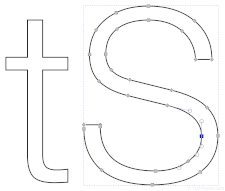PostScript
PostScript is a page description language that describes a page's text, graphics, and layout. PostScript documents can display the same content rendered in pixels on a screen and as high-DPI printed output. PostScript-compatible desktop publishing software and printers helped start the desktop publishing revolution in the 1980s, although later technologies like PDF have largely replaced PostScript for electronic document distribution.
Before the introduction of PostScript, typesetting was a manual process that involved assembling text and graphics on a pasteboard, then photographing the layout and transferring it to a typesetting plate for reproduction. Computerized typesetting systems were expensive and complicated to operate, making it difficult for designers to lay out pages. In 1984, Adobe developed PostScript as a device-independent page description language that drew a page's contents using mathematically defined vector shapes. PostScript documents could be designed on a personal computer (like the Apple Macintosh), and would print the same on any PostScript-compatible printer. Designers could easily share documents between computers, desktop publishing applications, and printers.
Another aspect of the PostScript format is the use of PostScript fonts. Before PostScript, computers would use bitmap fonts to display text on the screen, while printers would use a separate outline font kept in the printer's memory for printed text. If you used a bitmap font in a document, but your printer did not have the outline version of that font installed, it would result in blocky and pixelated text. PostScript fonts (installed through the Adobe Type Manager utility) used a simplified version of the PostScript language and rendering engine to draw text characters on screen based on the outlines included in the font file. When you printed the document, the printer used those same outlines to render the text at the printer's native resolution for high-quality text.
File extensions: .PS
 Test Your Knowledge
Test Your Knowledge